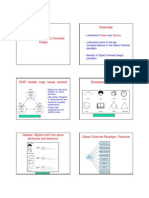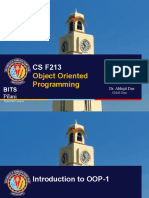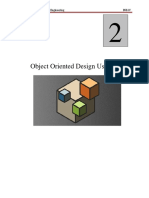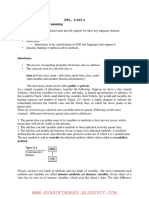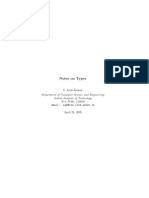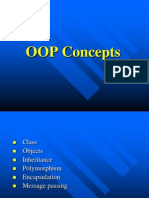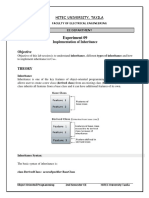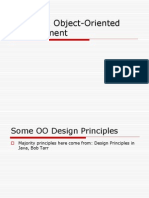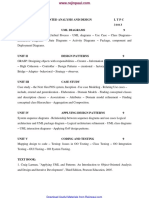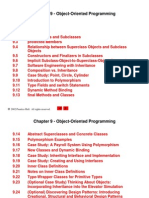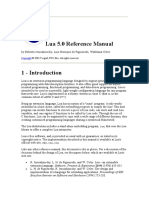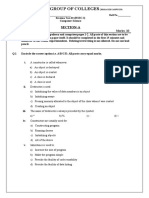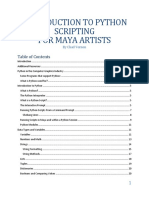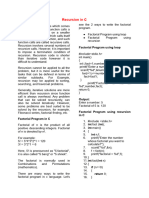0% found this document useful (0 votes)
124 views25 pagesObject Oriented Programming CS F213: BITS Pilani
The document provides an overview of object-oriented programming concepts including class, object, encapsulation, inheritance, polymorphism, and abstraction. It defines key terms like class, object, abstract data type and provides examples. It explains the three main OOP principles of encapsulation, inheritance, and polymorphism. Encapsulation binds data to code that manipulates it, keeping it safe from external interference. Inheritance allows new classes to extend existing classes, reusing their attributes and methods. Polymorphism allows the same method to have different meanings depending on the type of data passed.
Uploaded by
ArtZilla YTCopyright
© © All Rights Reserved
We take content rights seriously. If you suspect this is your content, claim it here.
Available Formats
Download as PDF, TXT or read online on Scribd
0% found this document useful (0 votes)
124 views25 pagesObject Oriented Programming CS F213: BITS Pilani
The document provides an overview of object-oriented programming concepts including class, object, encapsulation, inheritance, polymorphism, and abstraction. It defines key terms like class, object, abstract data type and provides examples. It explains the three main OOP principles of encapsulation, inheritance, and polymorphism. Encapsulation binds data to code that manipulates it, keeping it safe from external interference. Inheritance allows new classes to extend existing classes, reusing their attributes and methods. Polymorphism allows the same method to have different meanings depending on the type of data passed.
Uploaded by
ArtZilla YTCopyright
© © All Rights Reserved
We take content rights seriously. If you suspect this is your content, claim it here.
Available Formats
Download as PDF, TXT or read online on Scribd
/ 25





